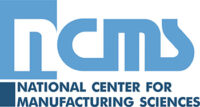CTMA Project #: 142099
Problem: The ability to maintain and sustain mobile structures such as shipping containers, recreation vehicles, ships, boats, truck cabs, and trailers operating continuously in extreme weather and environmental conditions remains a costly endeavor. Rigid wall aluminum and steel structures need nearly constant maintenance to avoid rust, corrosion, and to withstand additional damage such as scratches, dents, and scrapes from daily use. Once steel and aluminum are constructed, they must be painted or coated and then maintained to withstand the elements and harsh chemicals. Steel and aluminum dent easily which can lead to holes, rust, and even more repairs. In steel structures, floors constructed with metal have a significant bounce factor that can only be mitigated with additional support structure that will add weight and costs. A flat, level concrete pad or surface must be underneath to properly support the floor and reduce bounce.
Benefit: This effort will demonstrate if the new composite shelters will help save significantly on long-term maintenance and sustainment costs, increase the availability and operational readiness, and generate lessons learned for potential implementation across the Army and other Services. This project will serve as an example to commercial industry in how using composite materials in rigid wall construction can reduce maintenance and sustainment costs for these items.
Solution/Approach: Advanced composites have been developed that are naturally corrosion resistant. In addition to being corrosion resistant, these composite materials are much stronger and lighter. For a rigid wall structure, using composites instead of steel or aluminum will extend the lifecycle three times longer than current designs and reduce overall maintenance labor and material costs. This initiative will advance the state of new composite technologies and design processes to improve the functionality and lifecycle of rigid wall shelters. This technology can then be applied to a wide range of mobile shelters and other storage devices across commercial industries and other DOD organizations.
Impact on Warfighter:
- Enhance warfighter safety and operational readiness
- Improve structural performance, maintainability, and affordability
- Reduce repair and fuel costs
- Increase equipment lifespan and availability
DOD Participation:
- U.S. Army Project Manager Medical Sustainment Systems (PM MSS)
- U.S. Army Combat Capabilities Development Command Soldier Center (CCDC SC)
- U.S. Army Medical Materiel Development Activity (MMDA)
Industry Participation:
- Core Composites
- NCMS
Benefit Area(s):
- Cost savings
- Maintenance avoidance and reliability
- Maintenance management improvement
- Improved readiness
- Durability
- Reliability improvement
- Lightweighting
Focus Area:
- Reliability improvement (hardware)




